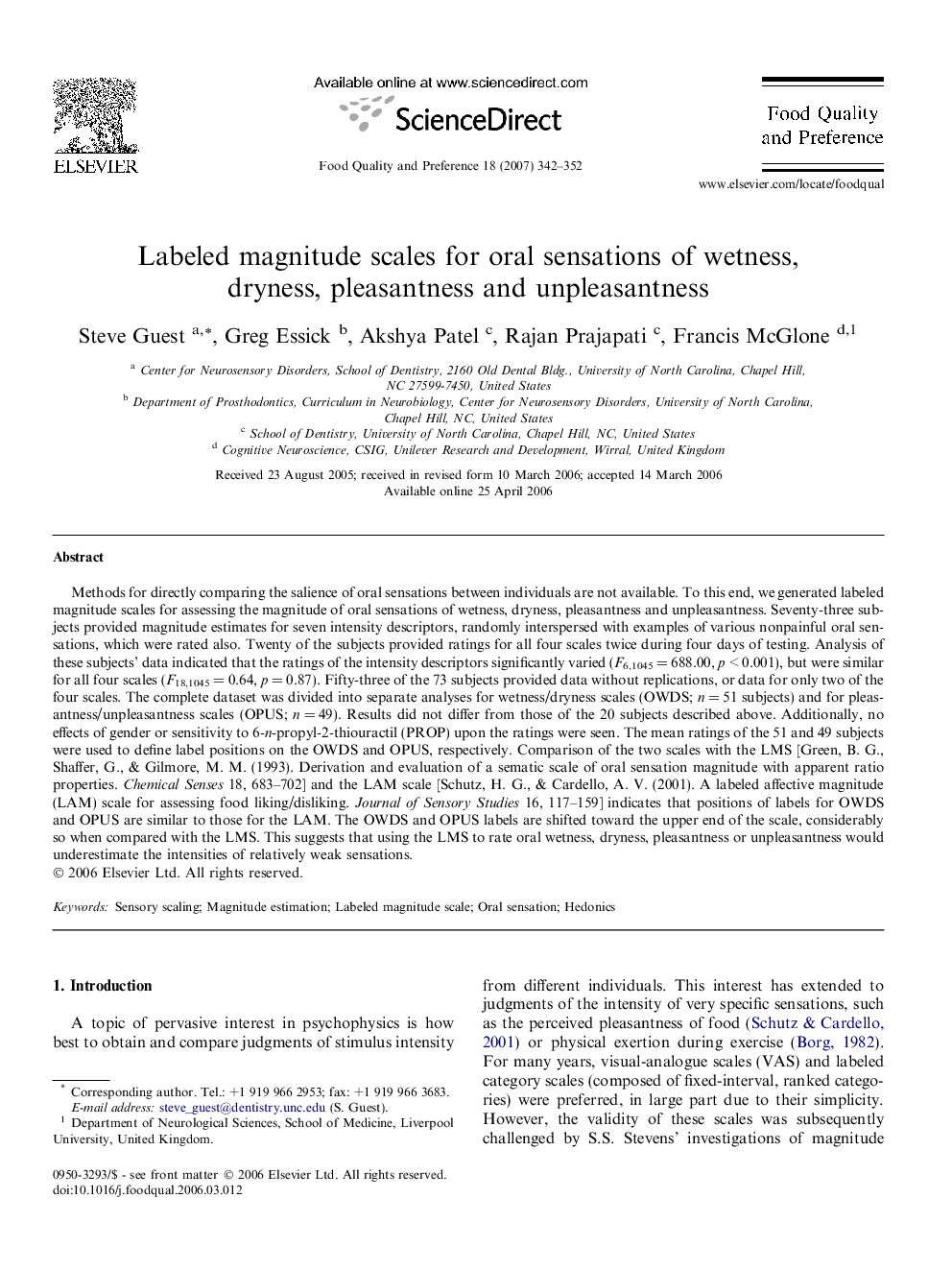| Article ID | Journal | Published Year | Pages | File Type |
|---|---|---|---|---|
| 4318171 | Food Quality and Preference | 2007 | 11 Pages |
Methods for directly comparing the salience of oral sensations between individuals are not available. To this end, we generated labeled magnitude scales for assessing the magnitude of oral sensations of wetness, dryness, pleasantness and unpleasantness. Seventy-three subjects provided magnitude estimates for seven intensity descriptors, randomly interspersed with examples of various nonpainful oral sensations, which were rated also. Twenty of the subjects provided ratings for all four scales twice during four days of testing. Analysis of these subjects’ data indicated that the ratings of the intensity descriptors significantly varied (F6,1045 = 688.00, p < 0.001), but were similar for all four scales (F18,1045 = 0.64, p = 0.87). Fifty-three of the 73 subjects provided data without replications, or data for only two of the four scales. The complete dataset was divided into separate analyses for wetness/dryness scales (OWDS; n = 51 subjects) and for pleasantness/unpleasantness scales (OPUS; n = 49). Results did not differ from those of the 20 subjects described above. Additionally, no effects of gender or sensitivity to 6-n-propyl-2-thiouractil (PROP) upon the ratings were seen. The mean ratings of the 51 and 49 subjects were used to define label positions on the OWDS and OPUS, respectively. Comparison of the two scales with the LMS [Green, B. G., Shaffer, G., & Gilmore, M. M. (1993). Derivation and evaluation of a sematic scale of oral sensation magnitude with apparent ratio properties. Chemical Senses 18, 683–702] and the LAM scale [Schutz, H. G., & Cardello, A. V. (2001). A labeled affective magnitude (LAM) scale for assessing food liking/disliking. Journal of Sensory Studies 16, 117–159] indicates that positions of labels for OWDS and OPUS are similar to those for the LAM. The OWDS and OPUS labels are shifted toward the upper end of the scale, considerably so when compared with the LMS. This suggests that using the LMS to rate oral wetness, dryness, pleasantness or unpleasantness would underestimate the intensities of relatively weak sensations.
